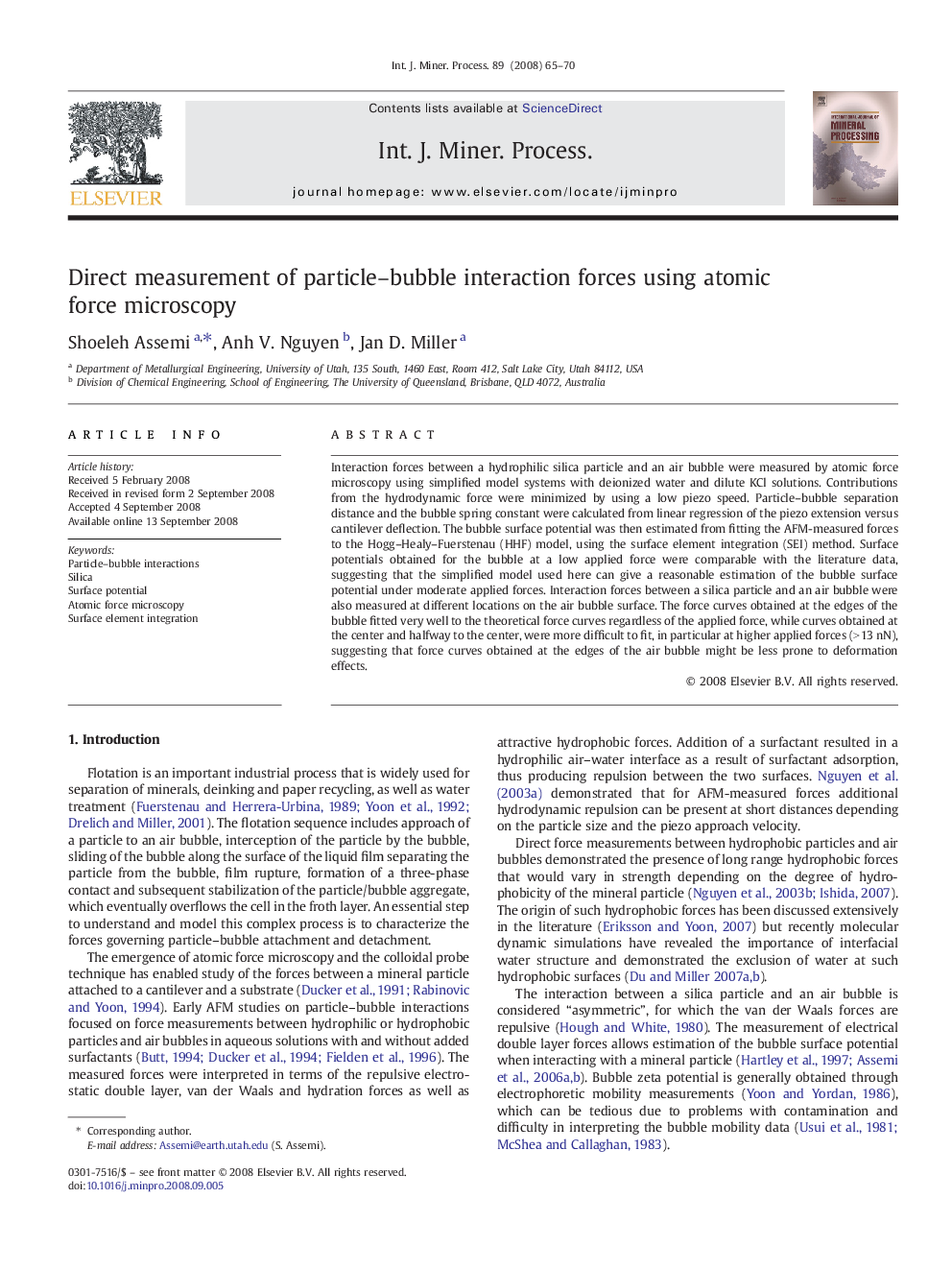| Article ID | Journal | Published Year | Pages | File Type |
|---|---|---|---|---|
| 214418 | International Journal of Mineral Processing | 2008 | 6 Pages |
Interaction forces between a hydrophilic silica particle and an air bubble were measured by atomic force microscopy using simplified model systems with deionized water and dilute KCl solutions. Contributions from the hydrodynamic force were minimized by using a low piezo speed. Particle–bubble separation distance and the bubble spring constant were calculated from linear regression of the piezo extension versus cantilever deflection. The bubble surface potential was then estimated from fitting the AFM-measured forces to the Hogg–Healy–Fuerstenau (HHF) model, using the surface element integration (SEI) method. Surface potentials obtained for the bubble at a low applied force were comparable with the literature data, suggesting that the simplified model used here can give a reasonable estimation of the bubble surface potential under moderate applied forces. Interaction forces between a silica particle and an air bubble were also measured at different locations on the air bubble surface. The force curves obtained at the edges of the bubble fitted very well to the theoretical force curves regardless of the applied force, while curves obtained at the center and halfway to the center, were more difficult to fit, in particular at higher applied forces (> 13 nN), suggesting that force curves obtained at the edges of the air bubble might be less prone to deformation effects.
